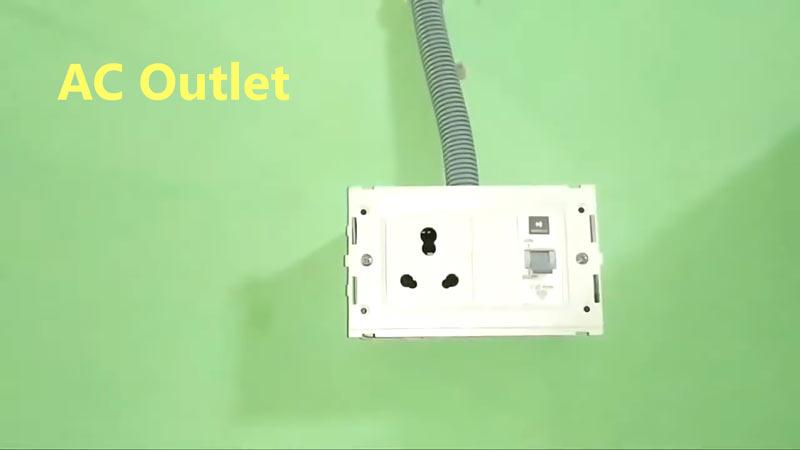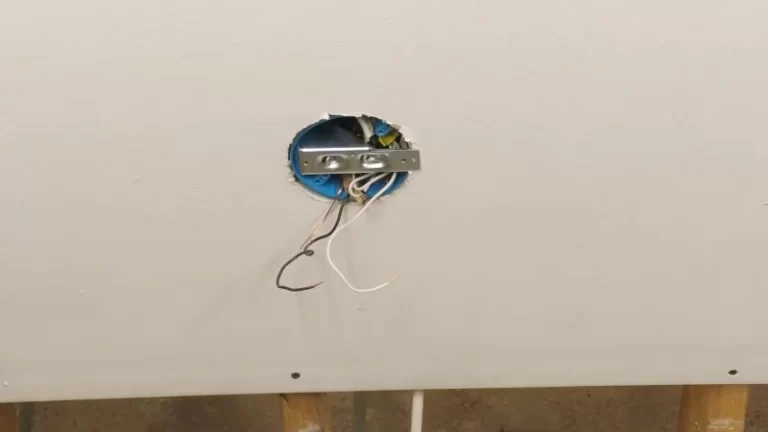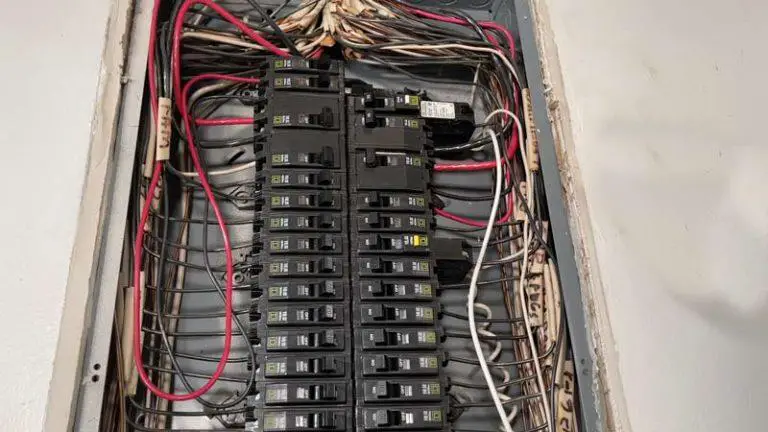Outlet Has 120V but Doesn’t Work [Causes and Fixes]

It’s frustrating when you go to plug something in and find that the outlet isn’t working. This is especially true if you’re getting a reading of 120v when you test it. This can be a sign of a larger issue with your electrical system. It’s important to address the problem to ensure the safety and functionality of your outlets.
Properly functioning outlets are essential for powering electronic devices and appliances in the home. A malfunctioning outlet can be a major inconvenience. In this article, we will explore some potential causes of outlets not working even though they have 120v. We will also provide some solutions for fixing the problem.
You'll Learn About
Why Does Outlet Has 120v but Doesn’t Work
You might have a problem with some of your electrical outlets not working. This can happen even though you are getting a reading of 120-122V when you test them with a digital multimeter. Bob Mariani suggests that this could be because the outlets are fried. It could also be due to a problem with the neutral connection.
To confirm whether the outlets are fried, you could try replacing them. See if that fixes the problem. If replacing the outlets does not fix the problem, you may need to look for other issues. These could include a problem with the wiring in the wall or with the circuit breaker.
It is always best to have a trained electrician diagnose and fix any electrical problems. Working with electricity can be dangerous if you are not properly trained.
Causes of Outlet Has 120v but Doesn’t Work
1. Outlets May Be Fried or Damaged
One potential cause of outlets not working despite having 120v is that the outlets themselves may be fried or damaged. This can happen if the outlets are overloaded with high wattage appliances or devices. It can also happen if there is a surge of electricity that damages the outlet. If the outlets are fried, they will need to be replaced in order to fix the problem.
2. Problem With the Neutral Connection
Another potential cause of outlets not working despite having 120v is a problem with the neutral connection. The neutral wire is the white wire in an electrical circuit. It is responsible for carrying the current back to the source. If there is a problem with the neutral connection, it can prevent the outlets from functioning properly even though there is electricity present.
3. Issue With the Circuit Breaker or Wiring in the Wall
Another potential cause of outlets not working despite having 120v is an issue with the circuit breaker or the wiring in the wall. The circuit breaker is responsible for protecting the electrical system from damage. It does this by tripping when there is too much current flowing through the circuit.
4. Tripping Circuit Breakers
If the circuit breaker is tripped, it can prevent the outlets from functioning properly. Similarly, if there is a problem with the wiring in the wall, it can cause issues with the outlets. This could be due to damaged wiring, loose connections, or other issues.
How to Diagnose if Outlet Has 120v but Doesn’t Work?
Here are the steps to diagnose 120V outlet:
1. Test Outlets With a Digital Multimeter to Confirm Voltage
One of the first steps in diagnosing the problem with outlets not working despite having 120v is to use a digital multimeter to confirm the voltage. A digital multimeter is a tool that measures electrical properties, such as voltage, resistance, and continuity.
2. Turn Off Power
To test the outlets, you will need to turn off the power to the circuit. Then, use the multimeter to measure the voltage between the hot and neutral wires (usually the black and white wires).
If you are getting a reading of 120v or close to it, this means that there is electricity present in the outlet. However, it may not be functioning properly.
3. Check Wiring
If you have confirmed that there is electricity present in the outlets but they are not functioning properly, the next step is to check the circuit breaker and the wiring in the wall for any issues.
You can check the circuit breaker by looking for a tripped switch or a switch that is in the “off” position. If the circuit breaker has tripped, you will need to reset it and see if that fixes the problem.
4. Check Circuit Breaker
If the circuit breaker is not the issue, you will need to inspect the wiring in the wall. Look for any loose connections or damaged wires that could be causing the problem.
5. Consider Replacing Outlets
If you have checked the circuit breaker and the wiring in the wall and the outlets are still not functioning properly, you may want to consider replacing the outlets. This is especially likely to be the solution if you suspect that the outlets may be fried or damaged.
To replace an outlet, you will need to turn off the power to the circuit. Then, remove the old outlet. Install the new outlet according to the manufacturer’s instructions. If replacing the outlets does not fix the problem, it may be necessary to call a professional electrician to further diagnose the issue.
Solutions of Outlet Has 120v but Doesn’t Work
Here are the solutions of outlet has 120v but doesn’t work:
Replacing Damaged or Fried Outlets
If the outlets are fried or damaged, the most obvious solution is to replace them. This will involve turning off the power to the circuit. Then, remove the old outlet. Install a new outlet according to the manufacturer’s instructions.
It is important to make sure that the new outlet is properly wired and secured in place. This ensures the safety of the electrical system.
Repair the Neutral Connection
If the problem is with the neutral connection, the solution will be to identify and fix the issue. This could involve checking for loose connections or damaged wires. Then, tighten or repair them as needed.
It may also be necessary to check for any other issues with the wiring in the wall. These could be affecting the neutral connection.
Fix the Circuit Breaker or Wiring
If the problem is with the circuit breaker or the wiring in the wall, the solution will depend on the specific issue. If the circuit breaker has tripped, it will need to be reset. If there is a problem with the wiring, it may be necessary to repair or replace damaged wires. You may also need to tighten any loose connections.
It is important to have a trained electrician diagnose and fix any issues with the circuit breaker or wiring in the wall. These issues can be dangerous if not handled properly.
Safety Considerations
Here are some safety considerations you should consider while working with electrical outlets:
Contact Professional
It is important to hire a trained electrician to diagnose and fix any electrical problems in your home. Working with electricity can be dangerous if you are not properly trained. Electricians have the knowledge and experience to safely identify and fix electrical issues. They also have the necessary tools and equipment to do the job properly.
Hiring a trained electrician will also ensure that the work is done to code. This is important for the safety of your home and the people living in it.
Dangers of Working With Electricity
Working with electricity can be dangerous, even for trained professionals. Some of the potential dangers of working with electricity include the risk of electrocution, fires, and electrical shocks.
It is important to take proper precautions when working with electricity. This includes turning off the power to the circuit and using protective equipment. These steps minimize the risk of accidents and injuries. If you are not comfortable or familiar with electrical work, it is best to leave it to the professionals.
More Things You Might Need to Check Further
Here are a few additional tips for dealing with outlets that have 120v but are not functioning properly:
Check for Loose Connections
One potential cause of outlets not working is a loose connection between the outlet and the wiring in the wall. To check for loose connections, you can gently wiggle the outlet to see if it feels loose. If it does, you will need to tighten the screws or wires to secure the connection.
Check for Tripped Gfci Outlets
If you have any GFCI (ground fault circuit interrupter) outlets in your home, they may have tripped and stopped working. GFCI outlets are designed to shut off power to the outlet if they detect a ground fault. This can be caused by a number of things, including water exposure or a malfunctioning appliance. To reset a tripped GFCI outlet, you will need to press the reset button on the outlet.
Check for Damaged Wiring
If you have checked the outlets, circuit breaker, and connections and are still having problems, it is possible that the wiring in the wall may be damaged. This could be caused by a variety of factors, such as age, wear and tear, or physical damage. If you suspect that the wiring may be damaged, it is important to have a trained electrician inspect the wiring and repair any issues.
Use a Voltage Tester
In addition to using a digital multimeter to check the voltage, you can also use a voltage tester to quickly and easily check for electricity in an outlet. A voltage tester is a small device with a light or other indicator that will show you whether there is voltage present in an outlet. This can be a useful tool for quickly checking multiple outlets to see which ones are functioning properly.
Final Words
In conclusion, outlets that have 120v but are not functioning properly can be a sign of a larger issue with the electrical system in your home. Some potential causes of this problem include fried or damaged outlets, issues with the neutral connection, or problems with the circuit breaker or wiring in the wall.
To diagnose the problem, it is important to use a digital multimeter to confirm the voltage. You should also check the circuit breaker and wiring for any issues. Consider replacing the outlets to see if that fixes the problem.
The solutions for fixing the problem will depend on the specific issue. They may involve replacing damaged outlets, checking and repairing any issues with the neutral connection, or fixing any problems with the circuit breaker or wiring in the wall.
It is important to address the problem to ensure the safety and functionality of the electrical system in your home. It is always best to hire a trained electrician to diagnose and fix any electrical issues.





